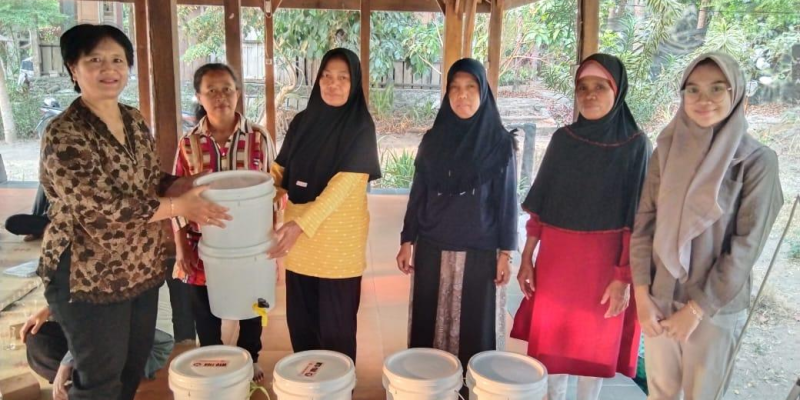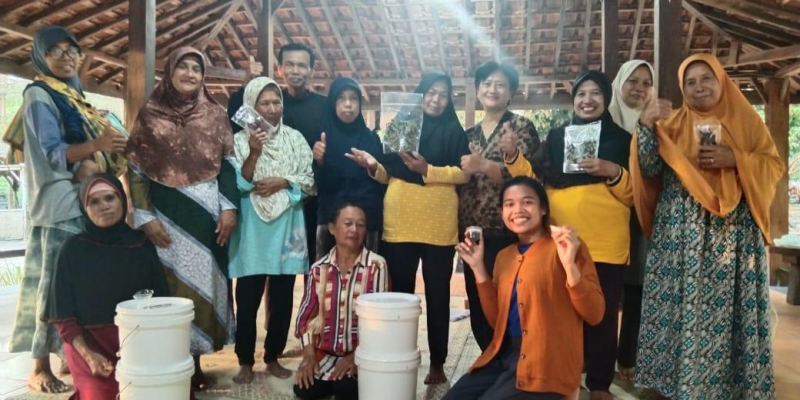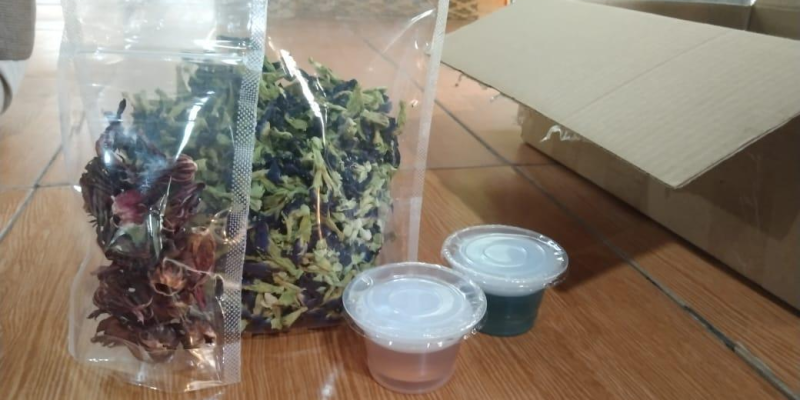In connection with the continuation of the Community Service Program – the Independent Learning Independent Campus (MBKM) 2023, the Faculty of Biology Universitas Gadjah Mada in Blotan hamlet, led by Prof. Dr. Kumala Dewi MSc.St along with students, Alfina Damayanti ( and Estherina Claudya Manurung, conducted an extension activity on natural food and Fabric Dyes as well as Organic waste processing using stacked bucket at The Blotan village hall on Thursday, October 2023 from 3.30 PM to 5.00 PM. The activity was attended by the head of PKK RT 01 along with 12 members.
The material was delivered by Prof. Dr. Kumala Dewi MSc.St. She explained the advantages and disadvantages of using synthetic dyes compared to natural dyes. The use of natural dyes, whether for food and beverages or for batik fabric coloring, supports the Sustainable Development Goals (SDGs), especially goal number 2, which aims to end hunger, achieve food security, improve nutrition, and promote sustainable agriculture. Natural dyes introduced in this session included butterfly pea flowers (Clitorea ternatea L) for blue color and roselle (Hibiscus sabdariffa L) which provides red color for food and beverages. Additionally, there are other types of plants that can be used for food coloring, such as turmeric, pandan leaves, and black rice. In addition to providing natural color, the use of infusions from butterfly pea flowers, roselle petals, and black rice can also support health as they contain beneficial compounds like anthocyanins and vitamin C, which act as antioxidants. By planting butterfly pea flowers, roselle, or other beneficial plants, the environment can also be enhanced. Regarding fabric dyeing, Prof. Kumala Dewi MSc.St explained that the leaves of the indigo plant (Indigofera tinctoria L), which belongs to the legume family, can be processed to produce Indican dye, which imparts a blue color to fabric. The use of natural dyes for fabric can also reduce water pollution, which often occurs around batik industries that use synthetic dyes. Planting Indigofera is easy, and this plant can be beneficial in improving soil fertility.
In addition to the explanation about natural dyes, the process of household organic waste processing to create liquid fertilizer using stacked buckets was also presented. This was done in an effort to support the resolution of the waste problem, which has been a trending issue recently due to household waste disposal sites being full. Proper separation of household waste needs to be carried out diligently by every household member. Organic waste can be collected in stacked buckets, and with the help of Hermetia illucens flies that lay eggs in the waste, maggots can consume the waste and produce liquid fertilizer as well as residual solid waste. Both can be used for vegetable fertilizer, whether planted in polybags or in the field. From previous analyses, liquid fertilizer from organic waste processing with stacked buckets and the assistance of black soldier fly maggots contains hormones and amino acids that are beneficial for promoting plant growth. In this counseling event, small agar-agar snacks were also served, colored with natural blue dye (from butterfly pea flowers) and red dye (from roselle). Additionally, five sets of stacked buckets were provided for practical use in household organic waste processing. The participants were very enthusiastic in responding to the counseling session, with several questions discussed. Those who received the stacked buckets will report on their usage through videos, as well as the liquid fertilizer products produced. From this counseling activity for the PKK mothers in Blotan hamlet, it is hoped that the role of women in supporting food security for families and environmental sustainability can be established and sustained.




